Cookware can be categorized into several types, including non-stick, stainless steel, cast iron, and copper. Each type serves specific cooking needs and offers distinct benefits.
Choosing the right cookware is essential for effective meal preparation. Different materials provide unique heat conduction, durability, and maintenance requirements. Non-stick pans simplify cooking and cleanup, while stainless steel offers longevity and versatility. Cast iron is perfect for retaining heat and enhancing flavors, while copper cookware excels in temperature control.
Knowing the advantages of each type helps you make informed decisions, enhancing your culinary experience. As you explore various cookware options, consider your cooking habits and preferences to find the perfect fit for your kitchen. Understanding these types will elevate your cooking and help you achieve delicious results.
Introduction To Essential Cookware
Cookware is vital in every kitchen. The right tools make cooking easier and more enjoyable. Understanding different types of cookware helps you create delicious meals. Let’s explore what makes cookware essential.
The Role Of Cookware In Culinary Success
Cookware plays a significant role in your cooking journey. High-quality pots and pans can elevate any dish. Here are key reasons why cookware matters:
- Heat Distribution: Even heating prevents burning.
- Durability: Good cookware lasts longer.
- Versatility: Suitable for various cooking methods.
- Health: Non-toxic materials ensure safe cooking.
Key Factors To Consider When Choosing Cookware
Selecting the right cookware requires careful thought. Here are important factors to keep in mind:
- Material: Common options include stainless steel, cast iron, and non-stick.
- Size: Choose sizes that fit your cooking needs.
- Compatibility: Ensure it works with your stovetop type.
- Maintenance: Some materials require more care than others.
| Material | Pros | Cons |
|---|---|---|
| Stainless Steel | Durable, non-reactive, and dishwasher safe | Poor heat conduction |
| Cast Iron | Excellent heat retention, naturally non-stick | Heavy and requires seasoning |
| Non-Stick | Easy to clean, great for low-fat cooking | Can scratch easily, less durable |
Classic Stainless Steel
Classic stainless steel cookware is a staple in many kitchens. It combines style with functionality. This type of cookware is known for its durability and resistance to rust. It also does not react with acidic or alkaline foods. Many chefs prefer stainless steel for its heat retention and even cooking.
Pros And Cons Of Stainless Steel
| Pros | Cons |
|---|---|
| Durable and long-lasting | Can be more expensive than other materials |
| Non-reactive with foods | May not heat evenly on all stoves |
| Easy to clean | Food can stick without proper preheating |
| Resistant to stains and corrosion | Heavier than some alternatives |
Best Uses In The Kitchen
- Searing meats for a flavorful crust
- Sauteing vegetables quickly
- Making sauces and gravies
- Boiling pasta and potatoes
- Cooking soups and stews
Stainless steel cookware shines in both home and professional kitchens. Its versatility makes it suitable for various cooking methods. Chefs enjoy using it for its reliable performance. Choose classic stainless steel for a kitchen upgrade.
Non-stick Favorites
Non-stick cookware is a kitchen essential. It makes cooking and cleaning easier. Many people prefer these pans for everyday meals. They help prevent food from sticking, saving time and effort.
Advantages Of Non-stick Surfaces
Non-stick surfaces offer several benefits:
- Easy to Clean: Food slides right off.
- Less Oil Needed: Cook with less fat for healthier meals.
- Even Cooking: Provides consistent heat distribution.
- Lightweight: Easy to handle and maneuver.
These features make non-stick cookware popular among home cooks.
Caring For Non-stick Cookware
Proper care extends the life of your non-stick pots and pans. Follow these simple tips:
- Use wooden or silicone utensils. Avoid metal utensils to prevent scratches.
- Wash by hand with a soft sponge. Avoid abrasive cleaners.
- Store carefully. Stack with cloth or paper towels in between.
- Heat on low to medium. High heat can damage the surface.
By following these steps, your non-stick cookware will stay in great shape.
Cast Iron Heirlooms
Cast iron cookware is a timeless treasure. Many families pass down these durable pieces for generations. Cast iron skillets, Dutch ovens, and griddles offer unmatched cooking performance. They can enhance any meal with their unique heat retention and distribution.
Seasoning And Maintenance Of Cast Iron
Proper seasoning makes cast iron non-stick and easy to clean. Follow these steps for seasoning:
- Wash the cookware with mild soap and water.
- Dry it completely.
- Apply a thin layer of vegetable oil.
- Heat it in the oven at 375°F (190°C) for an hour.
- Let it cool and repeat as needed.
Maintain your cast iron by following these tips:
- Avoid soaking in water.
- Never use harsh detergents.
- Store in a dry place to prevent rust.
Regular seasoning keeps your cookware in top shape. It can last a lifetime with proper care.
Versatility Of Cast Iron Cooking
Cast iron cookware is incredibly versatile. Use it for:
- Frying
- Baking
- Roasting
- Searing meats
It’s perfect for stovetop and oven use. You can even use it over an open flame. Here’s a quick table of its uses:
| Cooking Method | Best For |
|---|---|
| Frying | Chicken, veggies |
| Baking | Cornbread, pies |
| Roasting | Meats, vegetables |
| Searing | Steaks, fish |
Cast iron can go from the stovetop to the oven seamlessly. This makes it a favorite among chefs and home cooks alike.
Copper Cookware Excellence
Copper cookware stands out in any kitchen. It combines beauty and function. Chefs love its excellent heat conductivity. Cooking becomes more precise and enjoyable with copper.
Why Choose Copper
Copper cookware offers several benefits:
- Fast Heating: Copper heats quickly and evenly.
- Temperature Control: Chefs can adjust heat easily.
- Durability: Proper care can make it last a lifetime.
- Aesthetic Appeal: It adds elegance to any kitchen.
Many professional chefs prefer copper for these reasons. It enhances cooking performance. Its unique look also impresses guests.
Maintaining Copper’s Shine
Keeping copper cookware shiny is easy. Follow these simple steps:
- Wash with warm, soapy water.
- Dry immediately to avoid water spots.
- Use a copper cleaner for tarnish.
- Store it in a dry place to prevent oxidation.
Regular maintenance keeps your cookware beautiful. A little effort goes a long way. Enjoy your copper cookware for years to come!
Ceramic Coated Innovations
Ceramic cookware has transformed modern kitchens. Its non-stick surface offers ease in cooking and cleaning. These innovations combine style with functionality. They are popular for their colorful designs and health benefits.
Health And Eco-friendly Attributes
Ceramic coated cookware stands out for its health benefits. It is free from harmful chemicals like PFOA and PTFE. This means safer cooking for you and your family.
- Non-Toxic: No harmful substances leach into food.
- Eco-Friendly: Made from natural materials.
- Energy Efficient: Heats quickly and evenly.
Ceramic coatings are durable and long-lasting. This reduces waste and promotes sustainability. Many brands focus on eco-friendly production methods.
Limitations Of Ceramic Cookware
Ceramic cookware has some drawbacks. It may not be as durable as other materials. With time, the coating can wear off.
- Chipping: Can chip if dropped.
- Heat Resistance: Limited to medium heat.
- Not Induction Compatible: Works on gas and electric stoves only.
Proper care is essential for longevity. Avoid using metal utensils to prevent scratches. Clean gently to maintain the coating.
Glass Cookware: A Clear Choice
Glass cookware has gained popularity for its many benefits. It offers a unique blend of functionality and aesthetics. Many cooks prefer glass for its versatility and safety. Let’s explore its advantages and precautions.
Benefits Of Cooking With Glass
Cooking with glass offers several notable benefits:
- Non-reactive: Glass does not react with food.
- Easy to Clean: Smooth surfaces make cleaning simple.
- Visible Cooking: You can see food while cooking.
- Heat Distribution: Even heating leads to better cooking results.
- Microwave Safe: Most glass cookware is safe for microwave use.
Precautions With Glassware
Using glass cookware requires some precautions:
- Avoid sudden temperature changes: Do not place hot glass in cold water.
- Check for cracks: Inspect glass before use.
- Use proper utensils: Avoid metal utensils to prevent scratches.
- Handle with care: Glass can break if dropped.
Following these tips ensures a safe cooking experience.
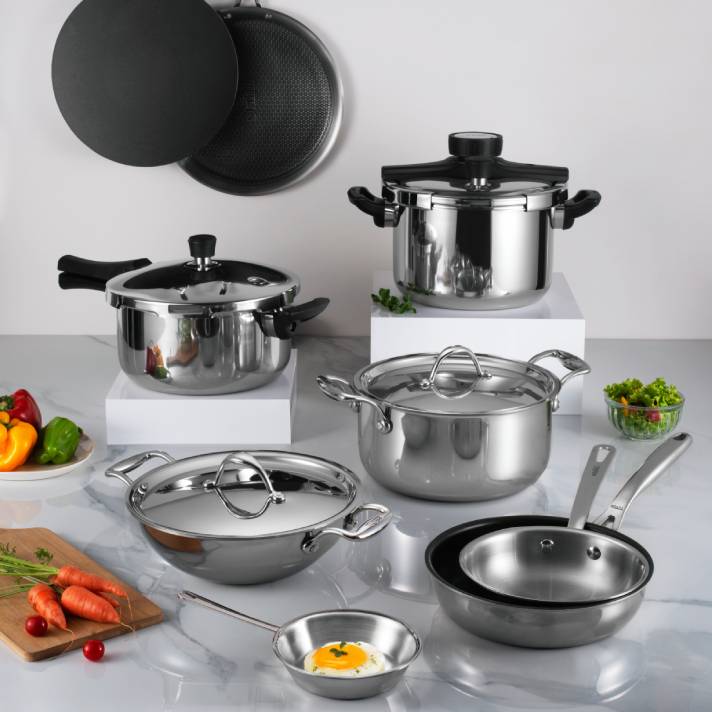
Credit: stahlkitchens.com
Hard-anodized Aluminum
Hard-anodized aluminum cookware offers excellent cooking performance. It features a durable surface that resists scratching and warping. This type of cookware is popular among chefs and home cooks alike.
Durability And Performance Factors
Hard-anodized aluminum is known for its strength. Here are some key benefits:
- Scratch-Resistant: The hard-anodized surface is tough.
- Non-Stick Properties: Food releases easily, requiring less oil.
- Even Heat Distribution: Cooks food uniformly for better results.
- Lightweight: Easy to handle and maneuver in the kitchen.
This cookware can withstand high temperatures. It is suitable for various cooking methods like frying, sautéing, and baking. Users often notice improved cooking times and flavors.
Comparing With Other Metals
How does hard-anodized aluminum stack up against other materials?
| Type of Cookware | Durability | Heat Conductivity | Weight | Cost |
|---|---|---|---|---|
| Hard-Anodized Aluminum | High | Excellent | Lightweight | Moderate |
| Stainless Steel | Very High | Good | Heavy | Higher |
| Cast Iron | Very High | Excellent | Very Heavy | Moderate |
| Copper | Moderate | Outstanding | Medium | High |
Hard-anodized aluminum offers a balance of durability and performance. It stands out for its lightweight design and moderate cost.
Specialty Cookware
Specialty cookware enhances your cooking experience. It helps create unique dishes. This section explores unique materials and specific items for various recipes.
Unique Materials: Stone, Silicone, And More
Specialty cookware often uses unique materials. Each material offers specific benefits:
| Material | Benefits |
|---|---|
| Stone | Retains heat well. Ideal for baking and roasting. |
| Silicone | Flexible and non-stick. Great for baking and freezing. |
| Copper | Conducts heat evenly. Perfect for sauces and sautéing. |
| Cast Iron | Durable and retains heat. Excellent for frying and baking. |
Choosing the right material enhances your dish. Each type offers a different cooking experience.
Specialty Items For Specific Dishes
Specialty items cater to specific culinary needs. Here are some must-have specialty cookware pieces:
- Paella Pan – Perfect for making Spanish paella.
- Wok – Ideal for stir-frying and steaming.
- Tagine – Excellent for slow cooking Moroccan dishes.
- Pressure Cooker – Speeds up cooking time for stews and beans.
- Fondue Pot – Great for melting cheese or chocolate.
Each specialty item serves a unique purpose. Invest in these pieces to elevate your cooking.
Accessorizing Your Cookware Collection
Enhancing your cookware collection can elevate your cooking experience. The right accessories make meal prep easier and more enjoyable. They can also expand your culinary skills. Let’s explore essential tools and how to go beyond the basics.
Essential Tools And Accessories
Every kitchen needs key accessories. They help improve efficiency and creativity. Here are some must-have items:
- Spatulas: Perfect for flipping and stirring.
- Whisks: Great for mixing and aerating ingredients.
- Measuring Cups: Ensure accurate ingredient amounts.
- Cutting Boards: Protect surfaces and keep food organized.
- Oven Mitts: Safeguard hands from heat.
Consider organizing these tools in a drawer or caddy. This keeps them accessible and tidy. A well-organized kitchen promotes a smooth cooking process.
Expanding Beyond The Basics
Once you have the essentials, explore other exciting accessories. These can enhance your cooking skills and experiences:
- Cast Iron Skillets: Great for searing and baking.
- Slow Cookers: Ideal for easy, flavorful meals.
- Food Processors: Speed up chopping and mixing tasks.
- Mandolins: Perfect for slicing vegetables evenly.
- Pressure Cookers: Cook meals faster while keeping flavors.
Consider investing in specialty tools, too. Items like a pizza stone or a sous-vide machine can elevate your cooking. Explore different styles and materials to find what suits you best.
| Accessory | Function | Benefits |
|---|---|---|
| Spatula | Flipping food | Prevents sticking and burning |
| Whisk | Mixing ingredients | Creates fluffy textures |
| Measuring Cups | Measuring ingredients | Ensures recipe accuracy |
Care And Maintenance Tips
Proper care and maintenance keep your cookware in great shape. Different materials require specific attention. Follow these tips to ensure your cookware lasts longer.
Cleaning And Storing Your Cookware
Cleaning your cookware properly is essential. Each type has unique cleaning needs.
- Stainless Steel: Use warm soapy water. Avoid steel wool.
- Cast Iron: Rinse with hot water. Dry immediately. No soap.
- Nonstick: Use a soft sponge. Avoid harsh cleaners.
- Copper: Clean with vinegar or lemon juice. Polish regularly.
Store cookware carefully to avoid damage. Keep them stacked or use a rack.
Extending The Life Of Your Cookware
Simple habits can extend the life of your cookware.
- Use the Right Utensils: Choose silicone or wooden utensils.
- Avoid High Heat: Use medium heat for cooking.
- Season Your Cast Iron: Apply oil after cleaning.
- Inspect Regularly: Check for scratches or damages.
Following these tips keeps your cookware in excellent condition. Enjoy cooking with well-maintained pots and pans.
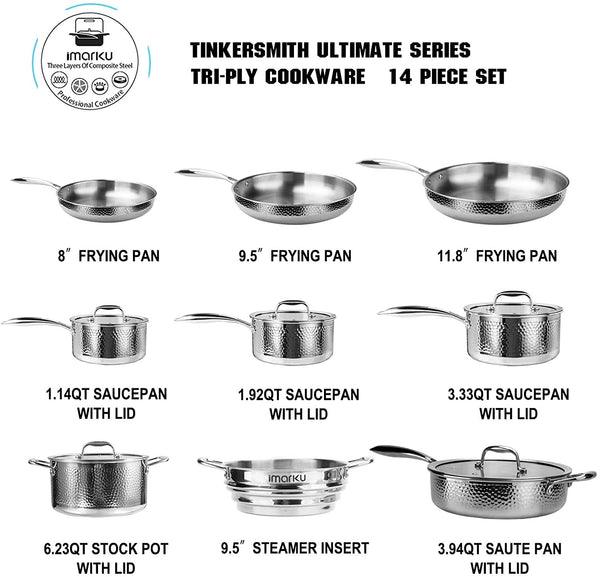
Credit: imarku.net
Making The Right Investment
Choosing the right cookware is vital. Investing wisely saves money and enhances cooking. Quality cookware lasts longer and performs better. This section explores how to balance quality and budget.
Balancing Quality And Budget
Finding the right balance is key. Here are some tips to help you:
- Assess Your Cooking Style: Consider how often you cook.
- Research Materials: Different materials offer various benefits.
- Set a Budget: Know how much you can spend.
- Read Reviews: Check user feedback on products.
Some cookware can be more affordable yet durable. Look for brands that offer good quality at lower prices. A well-chosen piece can be a great investment.
When To Splurge On High-end Cookware
Sometimes, spending more is worth it. Here are situations where splurging makes sense:
- Frequent Cooking: If you cook daily, quality matters.
- Specialty Cookware: Unique items enhance specific dishes.
- Long-Term Use: Invest in pieces that last a lifetime.
- Health Considerations: Non-toxic materials ensure safe cooking.
High-end cookware often provides:
| Feature | Benefit |
|---|---|
| Durability | Lasts for years without wear. |
| Even Heating | Cooks food evenly, improving taste. |
| Non-Stick Surface | Makes cooking and cleaning easy. |
Evaluate your needs carefully. A smart investment in cookware makes cooking enjoyable and efficient.
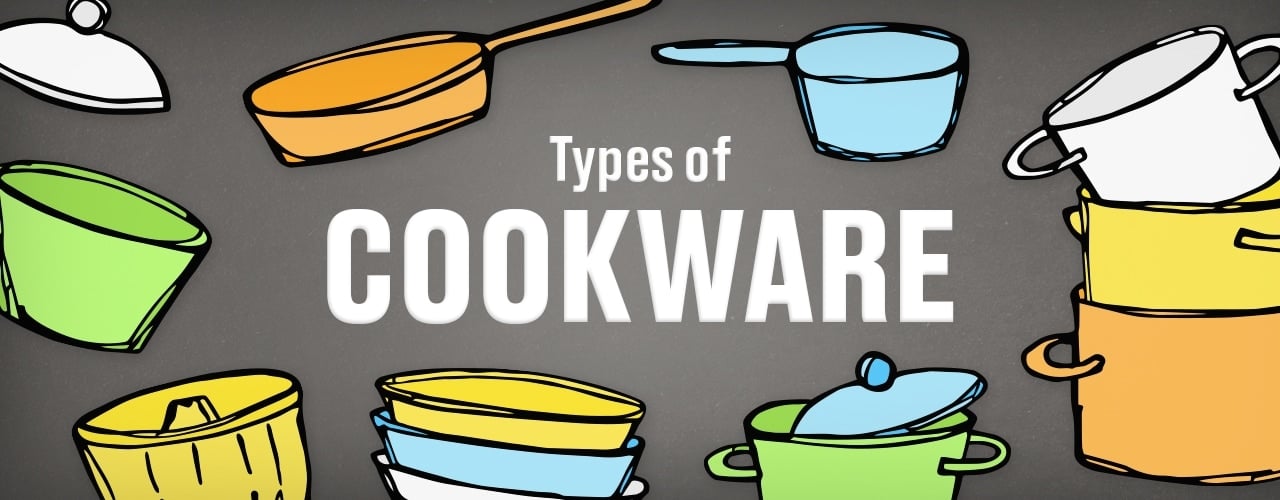
Credit: www.webstaurantstore.com
A Guide to Types of Cookware: Choosing the Right Tools for Your Kitchen
Cookware is an integral part of every kitchen, and the type you choose can have a significant impact on your cooking results. With so many different materials and types available, it can be challenging to select the best one for your needs. In this guide, we will walk you through the most popular types of cookware, their advantages and disadvantages, and their best uses to help you make an informed choice.
1. Stainless Steel Cookware
Stainless steel cookware is highly popular due to its durability, sleek design, and non-reactive properties. It is versatile enough for various cooking methods like sautéing, boiling, and browning.
Pros:
- Extremely durable and resistant to rust and corrosion.
- Non-reactive, so it won’t alter the taste of acidic foods.
- Easy to clean and usually dishwasher-safe.
- Suitable for multiple cooktops, including induction.
Cons:
- Stainless steel alone doesn’t conduct heat well; look for cookware with an aluminum or copper core for better heat distribution.
- Can be more expensive than other cookware materials.
Best for:
Searing, browning, boiling, and cooking acidic ingredients like sauces.
2. Non-Stick Cookware
Non-stick cookware is designed to prevent food from sticking to the surface, making it ideal for delicate foods and low-fat cooking. It is typically coated with materials like Teflon or ceramic for easy food release.
Pros:
- Easy to clean, as food won’t stick to the surface.
- Requires less oil or fat, perfect for healthy cooking.
- Ideal for cooking delicate items like eggs and fish.
Cons:
- Non-stick coatings can degrade over time, especially at high heat or when using metal utensils.
- Not suitable for high-heat cooking, which can damage the coating.
Best for:
Frying eggs, pancakes, fish, and low-fat cooking.
3. Cast Iron Cookware
Cast iron is renowned for its excellent heat retention and durability. It comes in two main varieties: bare cast iron and enameled cast iron.
Bare Cast Iron:
- Pros: Retains heat exceptionally well; perfect for slow cooking, frying, and baking. It can be used on the stovetop, in the oven, and even over open flames.
- Cons: Requires seasoning to maintain a non-stick surface and can rust if not properly cared for. Heavy and takes time to heat up.
- Best for: Frying, roasting, and baking.
Enameled Cast Iron:
- Pros: Offers the same heat retention as bare cast iron but with a non-reactive enamel coating, so no seasoning is required. Easy to clean.
- Cons: Heavier than other cookware types and more expensive.
- Best for: Braising, slow cooking, and making soups.
4. Copper Cookware
Copper cookware is highly valued for its superior heat conductivity, allowing precise control over cooking temperatures. However, copper is reactive, so most copper cookware is lined with stainless steel or tin.
Pros:
- Excellent heat conductivity and control.
- Heats up and cools down quickly, offering precise temperature adjustments.
Cons:
- Requires regular polishing to maintain its appearance.
- Expensive compared to other cookware materials.
- Copper reacts with acidic foods, so it needs to be lined with a non-reactive material.
Best for:
Cooking sauces, delicate tasks, and recipes requiring precise heat control.
5. Aluminum Cookware
Aluminum cookware is lightweight and a great conductor of heat. It’s often used in professional kitchens. Many aluminum cookware pieces are anodized, making them more durable and resistant to corrosion.
Pros:
- Lightweight and budget-friendly.
- Excellent heat conductor, offering fast and even cooking.
- Anodized aluminum is scratch- and corrosion-resistant.
Cons:
- Aluminum is reactive, which can affect the taste of acidic foods unless anodized.
- Less durable than stainless steel or cast iron.
Best for:
Everyday cooking, frying, sautéing, and baking.
6. Ceramic Cookware
Ceramic cookware is popular for its eco-friendly and non-stick properties. Ceramic coatings are typically free of harmful chemicals, making them a safer choice for health-conscious cooks.
Pros:
- Non-stick surface without harmful chemicals like PFOA or PTFE.
- Easy to clean and aesthetically pleasing.
- Safer for higher temperatures than traditional non-stick pans.
Cons:
- The ceramic coating can wear down over time, reducing its effectiveness.
- Generally less durable than metal cookware.
Best for:
Low to medium-heat cooking, stir-frying, and health-conscious, low-fat cooking.
7. Carbon Steel Cookware
Carbon steel is similar to cast iron but lighter in weight, offering quicker heat-up times while still retaining heat well. It is often favored by professional chefs for tasks like frying and searing.
Pros:
- Lighter than cast iron but offers similar heat retention.
- Ideal for high-heat cooking and browning.
- Can be seasoned to create a natural non-stick surface.
Cons:
- Requires seasoning, like cast iron.
- Prone to rust if not maintained properly.
Best for:
Stir-frying, searing, and high-temperature cooking.
8. Glass Cookware
Glass cookware is non-reactive and allows you to see your food as it cooks, making it a great choice for baking and slow-cooking recipes.
Pros:
- Non-reactive, so it won’t alter the flavor of food.
- Provides even heating and allows visibility of food during cooking.
Cons:
- Fragile and prone to breaking with sudden temperature changes.
- Not suitable for stovetop cooking.
Best for:
Baking, casseroles, and oven dishes that require monitoring.
9. Clad (Multi-Ply) Cookware
Clad cookware, often referred to as tri-ply or multi-ply, is made from layers of different metals, typically stainless steel, aluminum, or copper, to maximize performance. This combination offers the durability of stainless steel and the heat conductivity of aluminum or copper.
Pros:
- Provides even heat distribution and minimizes hot spots.
- Combines the benefits of multiple materials in one piece of cookware.
- Durable and versatile for many cooking techniques.
Cons:
- More expensive than single-material cookware.
- Heavier than some other cookware options.
Best for:
All-purpose cooking, from searing and frying to simmering and baking.
Frequently Asked Questions
What Are The Main Types Of Cookware?
The main types of cookware include stainless steel, cast iron, non-stick, and copper. Each type has its unique properties and benefits. Stainless steel is durable and non-reactive. Cast iron retains heat well and adds iron to food. Non-stick is easy to clean, while copper offers excellent heat conductivity.
How Do I Choose The Right Cookware?
Choosing the right cookware depends on your cooking style and preferences. Consider factors like heat conductivity, weight, and maintenance. For high-heat cooking, stainless steel or cast iron is ideal. Non-stick is great for low-fat cooking. Ensure the material matches your cooking methods for optimal results.
Is Non-stick Cookware Safe To Use?
Yes, non-stick cookware is generally safe when used correctly. Modern non-stick pans are made with PFOA-free coatings. Avoid overheating them, as high temperatures can degrade the coating. Always use silicone or wooden utensils to prevent scratching. Proper care extends the lifespan of your non-stick cookware.
Can I Use Metal Utensils On Non-stick Cookware?
It’s best to avoid metal utensils on non-stick cookware. Metal utensils can scratch and damage the non-stick coating. Instead, opt for silicone, wood, or plastic utensils to preserve the surface. This practice helps maintain the cookware’s effectiveness and extends its lifespan significantly.
Conclusion
Choosing the right cookware can elevate your cooking experience. Each type has its unique benefits, from non-stick to cast iron. Consider your cooking style and preferences when making a selection. The right cookware not only enhances flavor but also improves efficiency in the kitchen.
Invest wisely for delicious results every time.
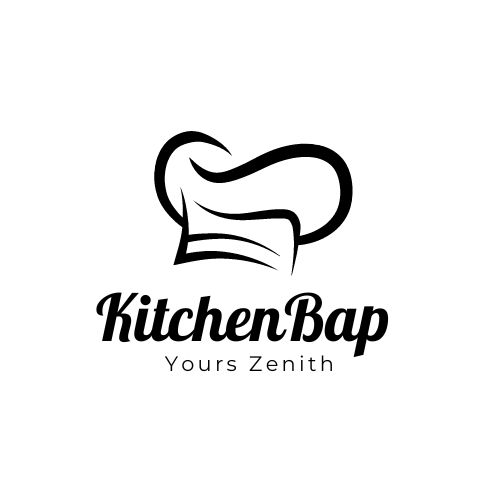
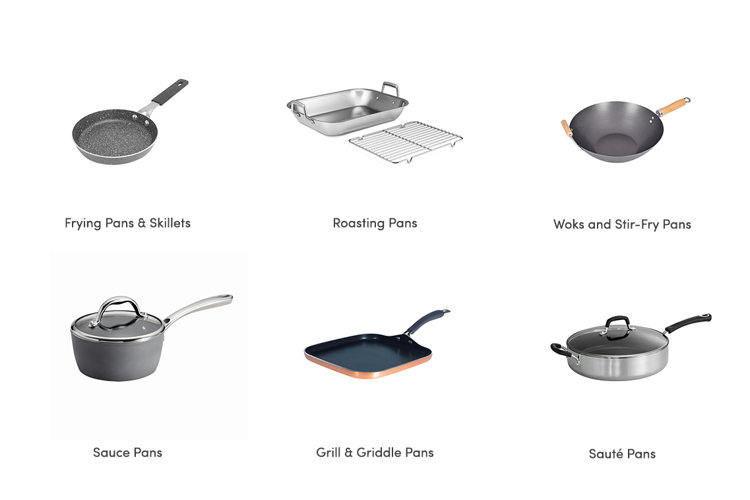
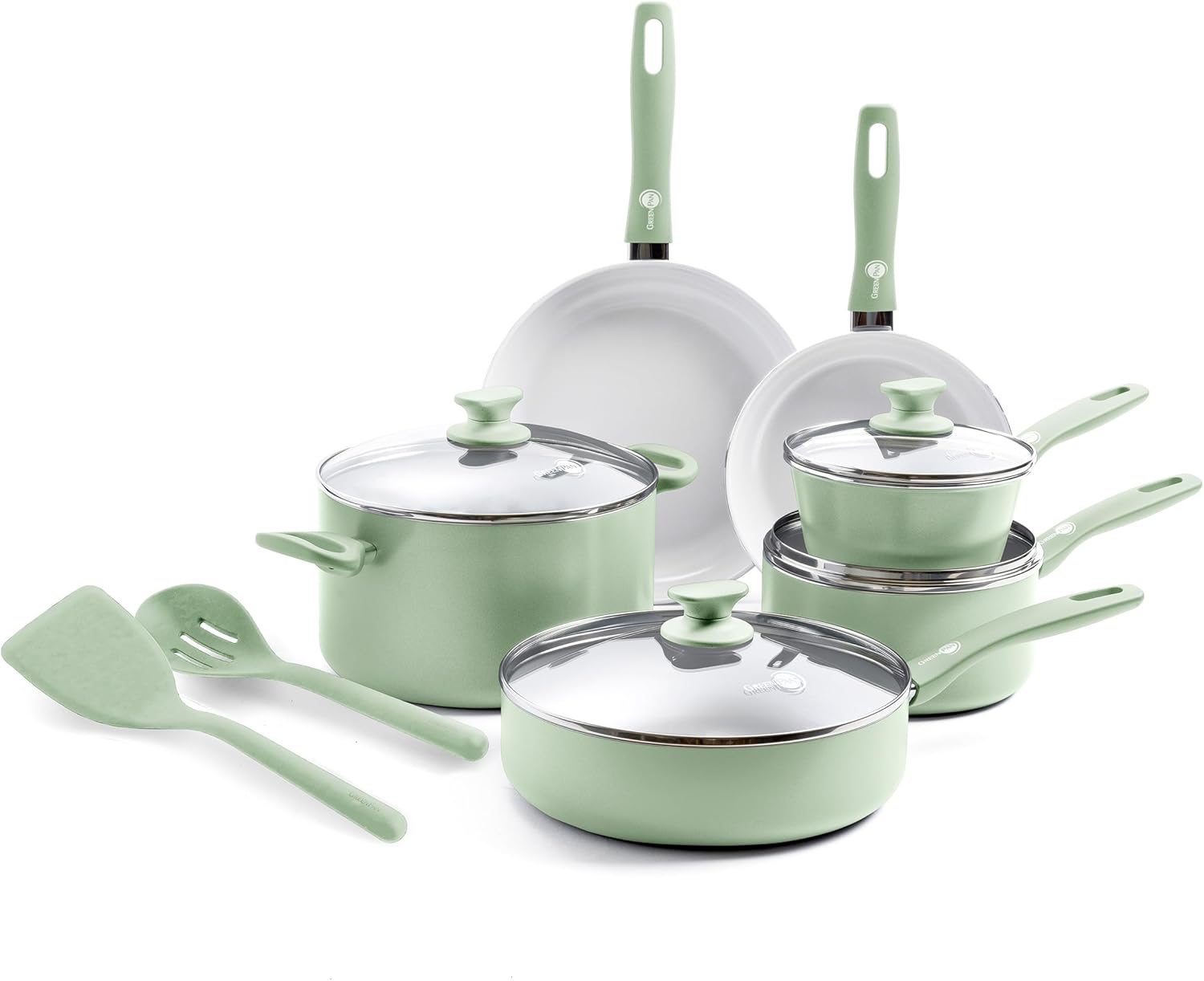
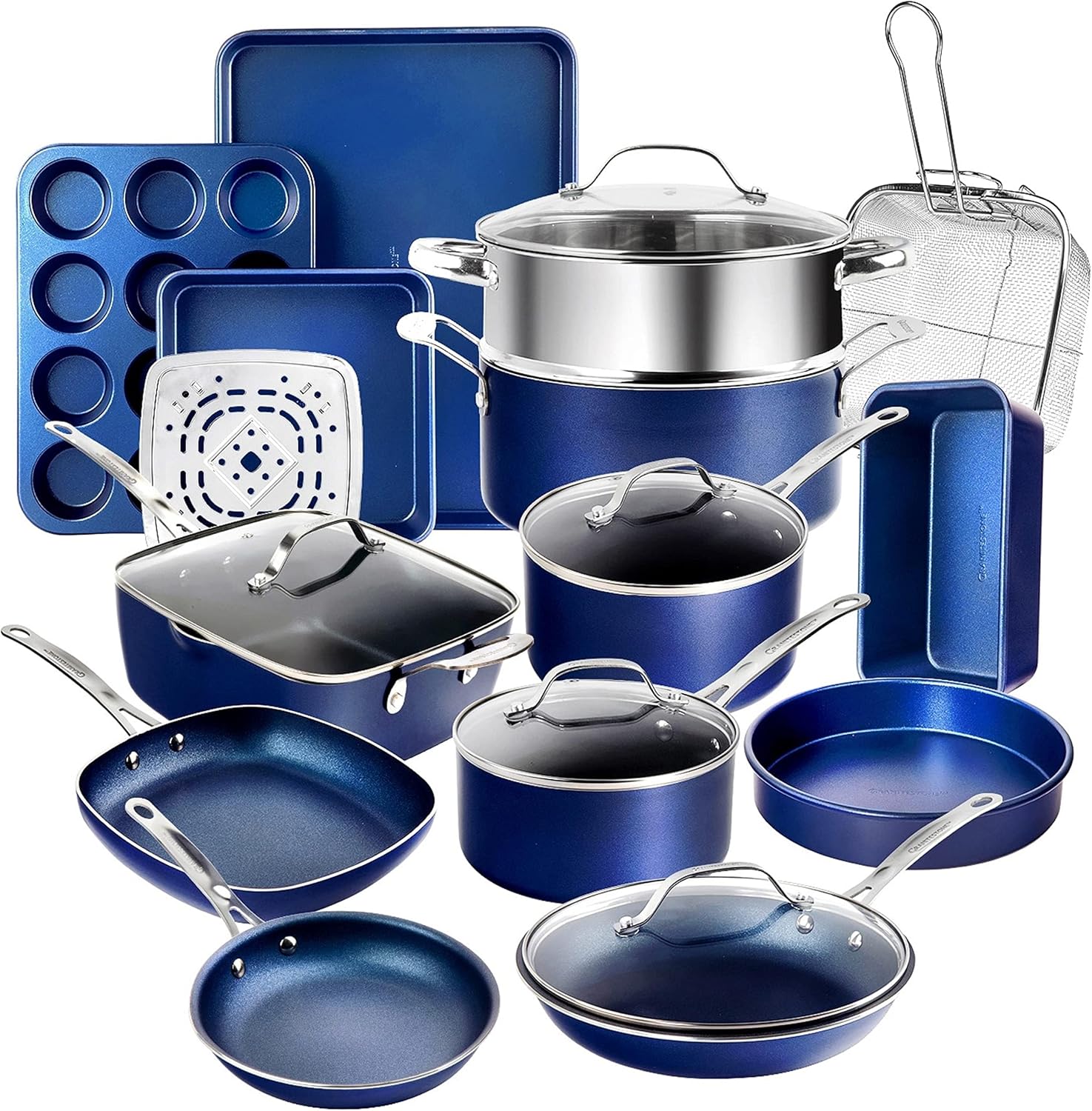
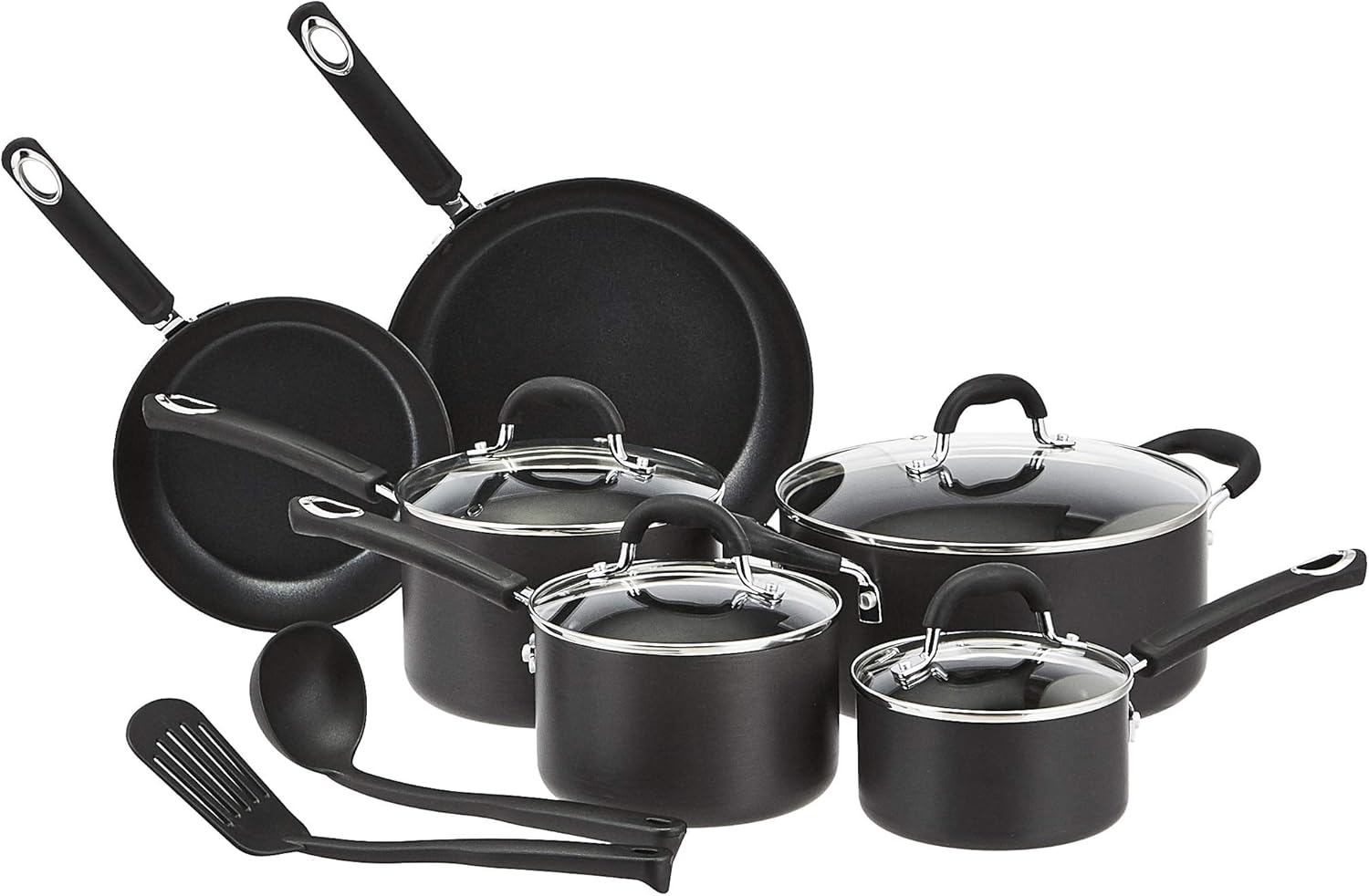
Leave a Reply